Two students in Yorkville University’s Bachelor of Interior Design program were recently recognized with the Interior Designers of Canada’s (IDC) Innovation in Design Thinking: Student Competition Award.
Class of 2024 graduate Andrea Clayton received an Award of Excellence for her thesis project, ‘Esse – Celebrating Stories and the Circularity of Life’, while current student Irina Alturmessova received an Honorable Mention for ‘The Tree of Life: Post-Disaster Shelter’, a project she completed in her Studio Moving Spaces class.
The Innovation in Design Thinking awards provide Canadian interior design students like Clayton and Alturmessova with a national platform to demonstrate the value of interior design and to illustrate the positive impact design has on the users of the spaces, supported by evidence-based research.
Reem Habib, Chair of the Bachelor of Interior program, said she’s “extremely proud” of her students’ achievements.
“Andrea and Irina’s winning projects feature innovative design solutions that focus on human-centered design and address significant societal and environmental challenges,” she said. “Being recognized by IDC is a testament to the high standards we hold and maintain in our BID program.”
We recently sat down with Clayton and Alturmessova to discuss their award-winning projects. Here’s what they had to say:
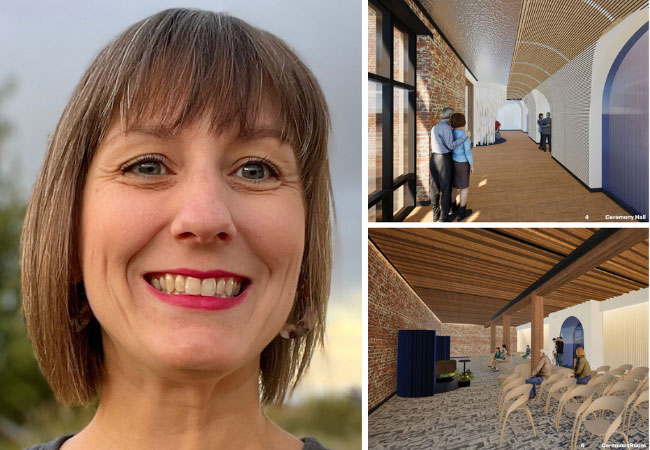
Andrea Clayton – ‘Esse: Celebrating Stories and the Circularity of Life’
Tell us a little bit about your thesis project, Esse: Celebrating Stories and the Circularity of Life.
My thesis project was based on a recompose funeral home and unique memorial space that focuses on community building through equality, reconciliation and storytelling.
It was important to me to create an opportunity for people to leave behind their stories (a metaphorical heirloom) when they may not have friends and family to share with or may not have any other possessions to pass down, as it helps to give meaning to their life and death.
As a result, one of the most special pieces in my project were the memorial “headstones” that were inspired by the music of Ojibwe Jingle Dresses and the anatomy of a flower. The base of the memorial will contain the stories and knowledge that the deceased wish to leave behind, while the flower and stem is a thin metal that allows it to sway and touch surrounding memorials to create sounds. Just like roots support a flower; the knowledge kept within the base of the memorial has the opportunity to create a strong foundation for community growth.
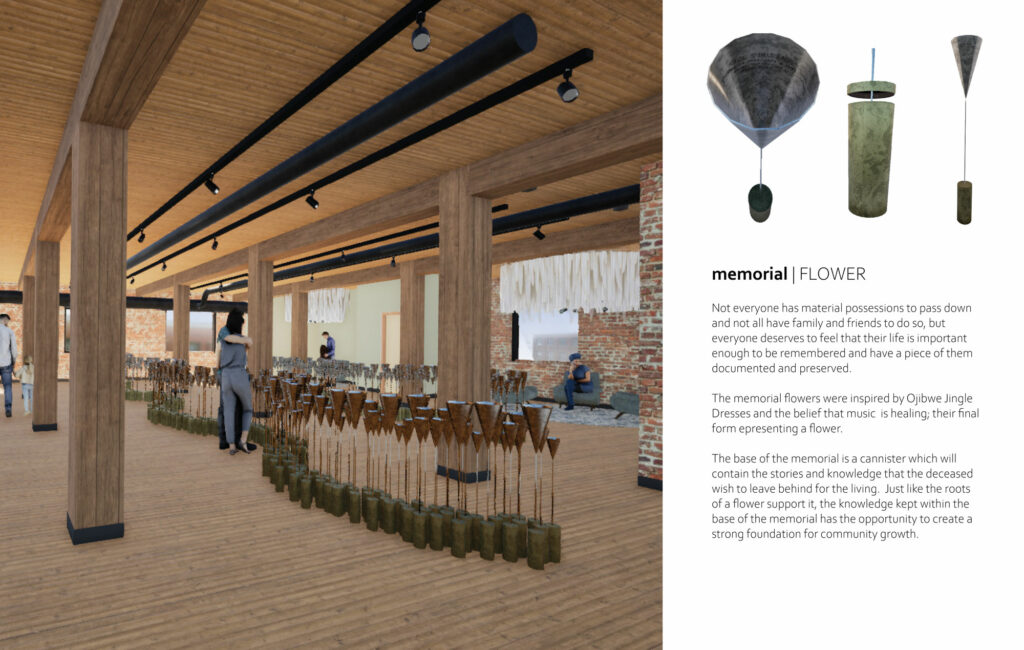
Tell us about some of the inspiration you drew from your studies at Yorkville when it came to designing this project.
A year into my studies I knew what I wanted my thesis topic to be, but until I took Maryam Karimi’s Social Justice class I didn’t understand the importance our profession can have on social justice issues. I am hoping that this is just the start of further research and prototyping to create more equitable and sustainable funerary practices that center on reconciliation with First Nations, Metis and Inuit people.
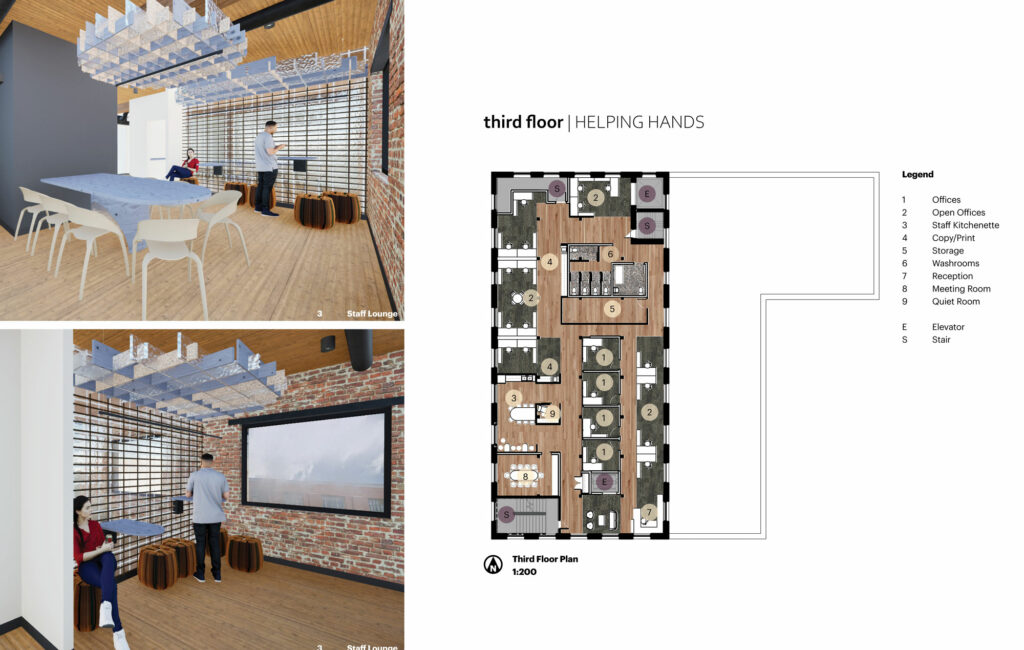
What does it mean to you to have been recognized by the IDC for your work on Esse?
Coming from a technologist background, where I’m not always recognized for my design ability, I have struggled with my confidence as a designer. This recognition provides some validation of my design ability. It was also the perfect way to end four years of studying for my Bachelor of Interior Design!
–––––––––––––––––––––––––––––––––––––––––––––––––––––––––––––
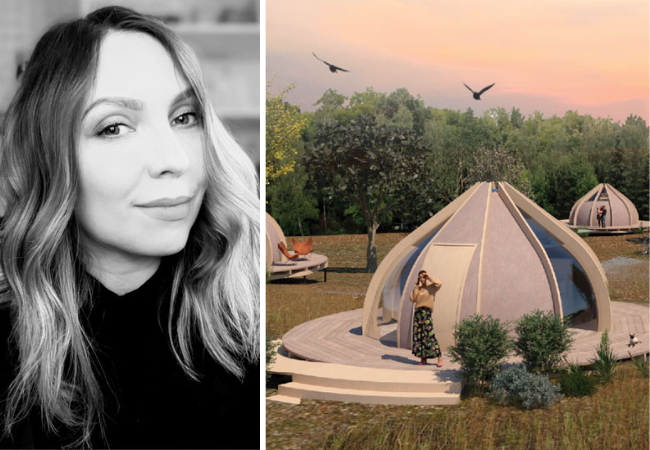
Irina Alturmessova – ‘The Tree of Life: Post-Disaster Shelter’
Tell us a little bit about your design, The Tree of Life: Post-Disaster Shelter. What was the inspiration behind the project?
My project, titled The Tree of Life: Post-Disaster Shelter, was completed during the Design Studio Moving Spaces class. Shortly before I took this course, devastating earthquakes struck Turkey during a harsh winter, leaving many communities in dire conditions. In response, governments provided immediate relief, such as temporary shelters, to ensure timely, lifesaving, multi-sectoral assistance. However, due to the long-term nature of infrastructure restoration, many people will likely need to reside in these shelters for several years. Therefore, it became essential to go beyond basic needs, focusing instead on creating adaptable shelters that can serve as both immediate relief and later transition into semi-permanent to permanent housing – fostering comfort, dignity, and community revitalization.
The main concept behind my design was the Tree of Life, specifically the Nazar Tree. In the aftermath of disasters, people often seek symbols of hope and renewal. The Tree of Life holds deep cultural significance, representing resilience, growth, and connection. In Turkish traditions, the Nazar Tree serves as a talisman, offering protection and hope. Just as the branches of a tree reach out and flourish, the Nazar Tree extends its protective embrace, guiding individuals toward recovery and a brighter future.
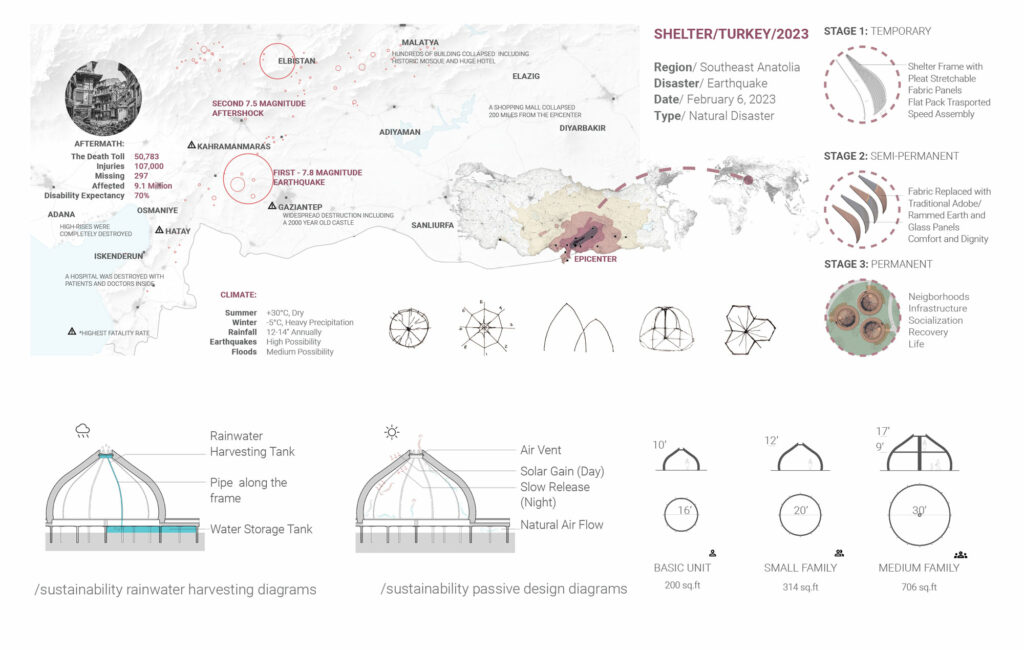
What was your biggest takeaway from working on the Tree of Life project?
Designing The Tree of Life was an opportunity for me to explore how interior design can contribute to humanitarian efforts. It was one of my favorite studio projects, and it made me feel deeply connected to the cause. Knowing that design can play a role in improving lives during times of crisis is incredibly fulfilling.
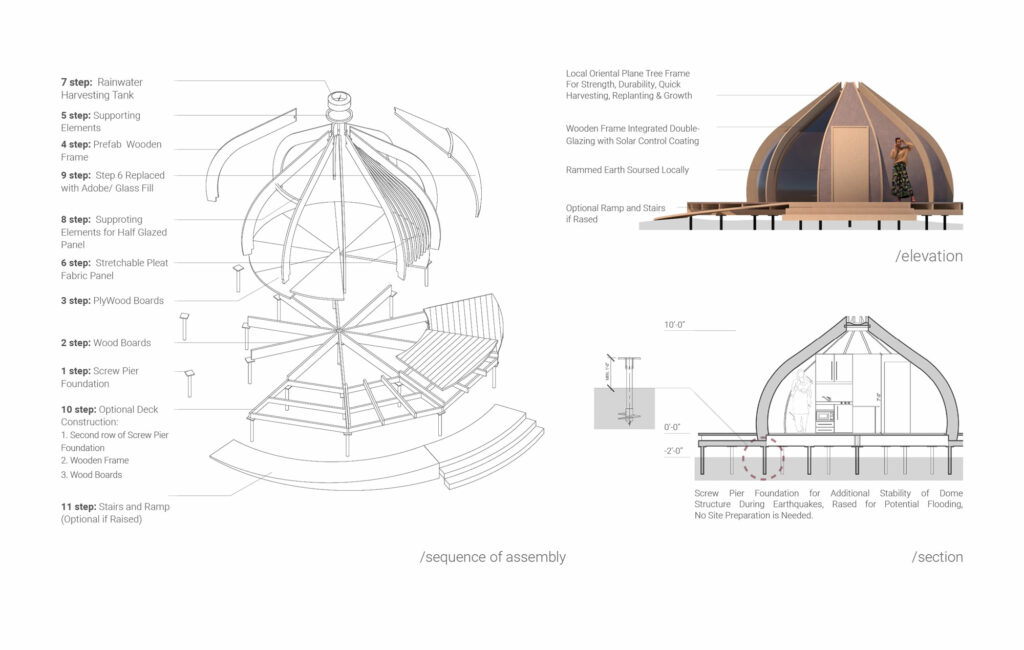
What does it mean to you to have been recognized by the IDC for your work on The Tree of Life?
I’m truly honored and proud to have my work on The Tree of Life recognized by the IDC. It feels rewarding to know that all those hours of studying and effort have paid off. This recognition reassures me that I’m on the right track and motivates me to keep going.
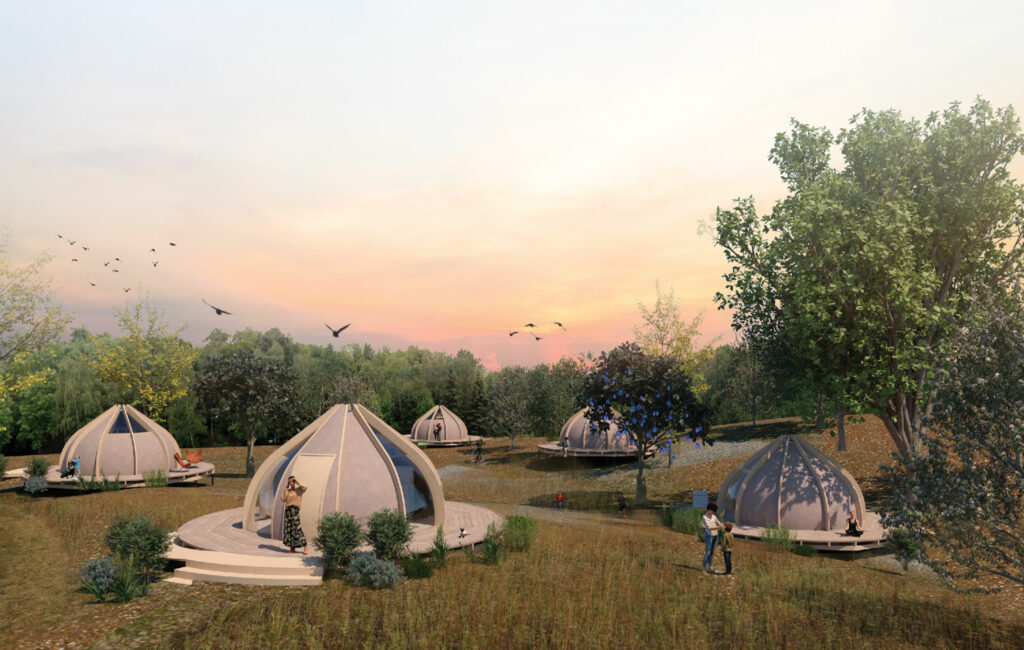
The winners of the Innovation in Design Thinking – IDC Student Competition will be honoured at the IDC Awards Celebration on November 7, 2024.






